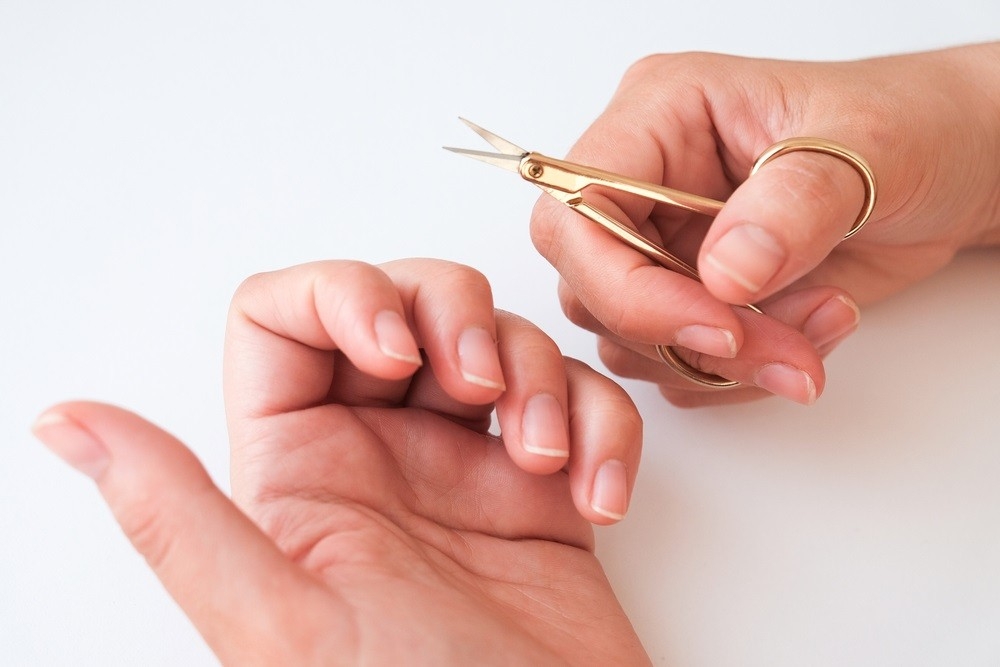Contents

Your fingernails, whether long, short, oval, or stiletto, can reveal much about who you are and what you do with them. They can give others hints about your distinct personality and even any unsavory tendencies you might have, such as picking or biting your skin and nails.
An expensive habit that can result in tiny pieces of ripped flesh at the root of your fingernails—and yes, occasionally even your toenails—nail biting and picking at your cuticles, the delicate nail bed surrounding it, can be nail biting and picking at your nails.
Hangnails are the tiny bits of skin that develop in this way. This is incorrect despite the name’s implication that you have a nail hanging off. A portion of cuticle skin constitutes a hangnail. Hangnails can cause paronychia, an infection that can be uncomfortable at times.
Samia Kadri, a family nurse practitioner with Banner Health, explained that paronychia is an inflammation that affects the tissue (skin) on the side or at the base of the fingernail. Because of the bacteria and germs that come into contact with our hands every day, it is typical for hangnails to become infected.
Although they might be annoying, hangnails can also be treated and removed. Here are some of the most excellent techniques to prevent hangnails. With Maby, you can take the initiative in everything, proper nail care with Maby blog.
What causes hangnails?
A sign of dry skin around your fingernails is having hangnails. Dry winter weather, frequent hand washing (which we should always do! ), and harsh chemicals like hand sanitizer or cleaning solutions can all produce dry skin, which can reduce the amount of oil in your skin and promote the growth of hangnails.
According to Kadri, hangnails and infections can also result from over-manicuring or cutting the nail too short, nail-biting, and picking at or trimming the cuticle. “This weakens the nail bed, which promotes the development of hangnails.”
If you touch or rub your hangnail against something, you’ll notice quite immediately if you have one. Ouch! How could something so tiny cause such pain?
The finger, in particular, has more sensitive blood vessels and nerve endings, according to Kadri. In addition to any discomfort, worsening hangnail symptoms typically include tenderness, redness, and edema. On the side of the damaged nail bed, the skin will naturally swell, become tender, and hurt. It may feel warm or fill with pus, suggesting this is an abscess.
How do I treat a hangnail?
First, resist the impulse to attempt and rip, shred, or (eek!) bite off the hangnail at all costs. This may break the skin and result in bleeding, additional discomfort, or bacterial or fungal infection.
Take the following actions at home to treat a hangnail:
Spend 10 to 15 minutes soaking the injured finger in warm water.
Mineral oil, petroleum jelly, or vitamin E oil can all be gently massaged into the area.
To keep the hangnail from sticking on anything and to lower the risk of additional infection, gently clip it with a sterilized cuticle or nail clippers. If you make a deep cut and it bleeds, wash it with warm water and apply antibiotic ointment to the area.
- To prevent the affected region from drying out and growing new hangnails, moisturize it.
- Early intervention may stop symptoms from getting worse, such as the growth of abscesses or an infection that spreads up the affected finger.
- According to Kadri, you should see your doctor if you get an abscess or your hangnail starts to ooze pus. The doctor can decide whether to drain the abscess and start oral antibiotics if required.
- Hangnails can cause problems, including cellulitis, frequent bacterial infection, and fungal infections, all of which need to be treated. Cellulitis symptoms include swelling and redness that extend up the finger.
How can I prevent hangnails?
Let’s talk about how to avoid hangnails now that you know what causes them and how to treat them.
Here are some pointers:
- Refrain from picking at your cuticles or biting your nails.
- Even if you get your cuticles clipped by a nail technician, don’t cut them yourself. Instead, immerse the cuticles in warm water and gently press them back using a cuticle tool.
- Daily moisturize your hands and cuticles.
- Avoid using abrasive soaps and chemicals such as acetone.
- Wear gloves when cleaning the house, doing the dishes, or gardening.
- When going outside in freezing weather, wear gloves.
- Drink plenty of water and consume a nutritious diet
- Consume a diet that is well-balanced and plenty of water.
Do hangnails usually disappear?
The majority of hangnails will disappear without any indication of illness. Hangnails that are infected require the proper care, much of which may be performed at home. You should visit a doctor if the infected hangnail doesn’t get better after about a week of home treatment and make your nails grow faster.
Takeaway
Although hangnails can be highly annoying, they can also be avoided by moisturizing your skin and making simple lifestyle adjustments.
If your infected hangnail doesn’t get better within a week or worsens, consult your doctor.
